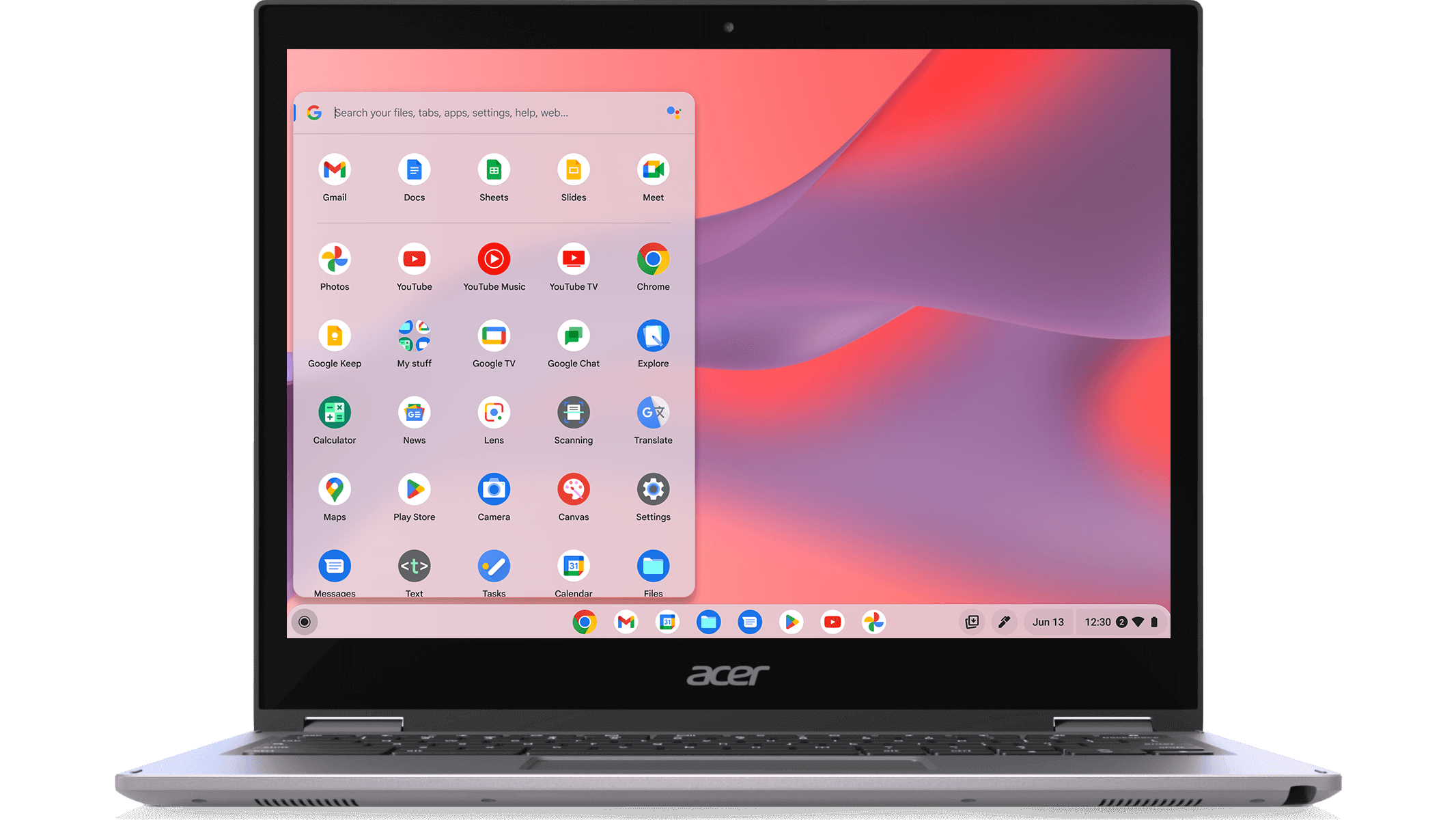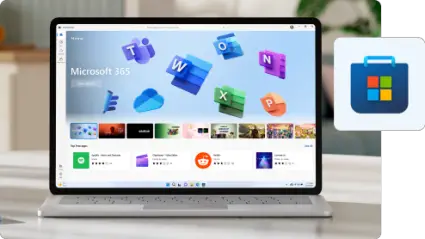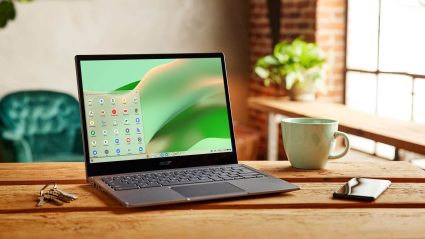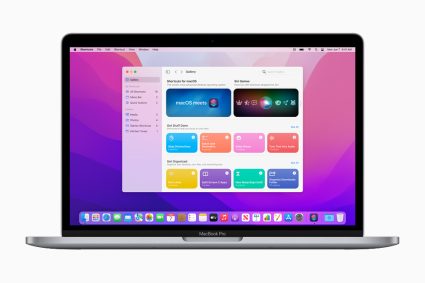
Introduction
When it comes to buying a laptop, one of the most important decisions to make is which operating system (OS) you will use. Choosing the right operating system can make a huge difference in the laptop’s performance and usability, so it’s important to understand the differences between the various options. In this article, we will discuss the four most popular laptop operating systems: Windows, Mac, Linux, and Chrome OS.
Content of the page
| Specification | Windows | Mac | Linux | Chrome OS |
|---|---|---|---|---|
| Developer | Microsoft Corporation | Apple Inc. | Various developers | Google Inc. |
| User Interface | Graphical user interface | Graphical user interface | Graphical user interface | Graphical user interface |
| Licensing | Proprietary | Proprietary | Free and open-source | Proprietary |
| Installation | Installation required | Installation required | Installation required | No installation required |
| Software | Compatible with most apps | Limited to Apple apps | Limited to open-source | Limited to Chrome apps |
| Security | Vulnerable to viruses | Low vulnerability to viruses, but not immune | Low vulnerability to viruses, but not immune | Low vulnerability to viruses, but not immune |
| Customization | High | Limited | High | Limited |
| Hardware | Compatible with most hardware | Limited to Apple hardware | Compatible with most hardware | Limited to Chromebooks |
| Gaming | Good | Limited | Good | Limited |
What are the Different Types of Operating Systems for Laptops?
Each operating system has its own advantages and disadvantages, and you should carefully consider which one is right for you before making a purchase. Windows is the most popular and has the most features, but Mac OS is simpler to use and is great for people who are already familiar with Apple devices. Linux is highly customizable, but it is not as user-friendly as the other two. Chrome OS is great for people who primarily use web-based applications, but it is not available on all laptops.
Windows Operating System

Windows Operating System (OS) is the most popular operating system for laptops, providing users with a complete set of features, security, and support. Windows OS is developed and maintained by Microsoft, and is used by millions of people around the world. Windows OS is available in several versions, each tailored to meet the needs of different users. It is important to choose the version of Windows OS that best meets your needs in order to ensure a productive and enjoyable laptop experience.
What is Windows OS and its Features?
Windows OS is an operating system that is designed to provide users with a comprehensive set of features and tools for their laptop. Windows OS includes an intuitive user interface, a range of powerful applications, and a range of security features. It also provides users with access to a wide range of third-party software and services, such as Microsoft Office and games. Some of the most popular features of Windows OS are its compatibility with popular hardware, its secure boot feature, and its ability to connect to the internet.
Windows OS also comes with a range of built-in tools and features. These include a task manager, an improved start menu, and a powerful search feature. The task manager allows users to manage their applications and processes, and the start menu provides access to the user’s applications and settings. The search feature allows users to quickly find items on their laptop, such as documents, images, and other files.
How to Choose the Right Version of Windows for Your Laptop?
When choosing the right version of Windows for your laptop, there are several factors to consider. The most important factor is the type of hardware your laptop is equipped with. Different versions of Windows are designed to work best with certain types of hardware. For example, Windows 10 is designed to work best with laptops that have the latest processors, graphics cards, and RAM.
Read more about the types of laptops.
It is also important to consider the features and applications that you need. Different versions of Windows offer different features and applications. For example, Windows 10 Pro includes encryption, remote desktop, and system backup features. Windows 10 Home does not include these features. It is important to understand the features and applications that are included in each version of Windows in order to choose the version that best meets your needs.
Finally, it is important to consider the cost of each version of Windows. Different versions of Windows have different prices, and it is important to choose the version that fits within your budget. It is also important to consider the cost of any additional software or services that you may need in order to use the version of Windows you choose.
Windows OS Tips and Tricks for Laptops
There are several tips and tricks that can help you get the most out of your Windows OS laptop. One of the most important tips is to keep your laptop’s software and hardware up to date. Keeping your laptop’s software and hardware up to date will ensure that your laptop runs smoothly and efficiently. Additionally, it is important to keep your laptop’s security settings up to date in order to protect your data and privacy.
It is also important to use a good antivirus program on your laptop in order to protect it from malicious software. Additionally, it is important to use a good password manager to keep your passwords secure. Finally, it is important to use a good backup solution to ensure that your data is safe in the event of a system crash or other disaster.
Mac Operating System
What is Mac OS and its Features?
Mac OS, also known as macOS, is the primary operating system developed and used by Apple Inc. It is built on a Unix-like foundation and is the second-most popular operating system after Windows. Mac OS is specifically designed to run on Apple’s range of Mac laptops and desktop computers. Mac OS is known for its high-quality user experience, reliability, and intuitive design. It provides users with a range of features, including an intuitive user interface, powerful multitasking capabilities, and the ability to run a wide range of applications and services.
The most recent version of Mac OS is macOS Big Sur. This version of the operating system comes with a range of new features and improvements, including a redesigned user interface, improved multitasking, and enhanced security. Mac OS also provides a range of built-in tools and services that allow users to customize their experience. This includes the ability to change the look and feel of the operating system, and even add new applications and services.
How to Choose the Right Version of Mac OS for Your Laptop?
When selecting the right version of Mac OS for your laptop, it is important to consider the type of laptop you have and the features you need. Mac OS is available in a range of versions, from the basic OS X Lion to the more advanced macOS Big Sur. Depending on your needs, you may want to select a version of Mac OS that is tailored for the type of laptop you have. For example, if you have an Apple laptop, you may want to select a version of Mac OS that is specifically designed for Apple laptops.
It is also important to consider the features that you need from Mac OS. Different versions of Mac OS come with different features, so it is important to select a version that meets your needs. For example, if you need powerful multitasking capabilities, you may want to select a version of Mac OS that offers advanced multitasking capabilities. On the other hand, if you are looking for a simple and straightforward operating system, you may want to select a version of Mac OS that is designed to be easy to use.
Mac OS Tips and Tricks for Laptops
Mac OS is a powerful operating system that can be used to get the most out of your laptop. Here are some tips and tricks for getting the most out of your Mac OS laptop:
- Customize Your Experience: Mac OS provides a range of built-in tools and services that allow you to customize your experience. This includes the ability to change the look and feel of the operating system, and even add new applications and services.
- Organize Your Workspace: Mac OS provides a range of features that make it easy to organize your workspace. This includes the ability to create multiple desktops, organize windows and applications, and quickly switch between different workspaces.
- Take Control of Your Files: Mac OS provides a range of tools and services that make it easy to take control of your files. This includes the ability to quickly search for files, organize your files into folders, and quickly access your files from any device.
- Backup Your Data: Mac OS provides a range of tools and services that make it easy to backup your data. This includes the ability to quickly and easily backup your data to an external drive or cloud storage service.
Linux Operating System

Linux is an open source operating system that powers a variety of devices, including laptops. Linux is a popular choice for laptop users who value security and performance. It is a great option for users who want to customize their laptop’s settings and applications. Linux is also an ideal choice for users who are comfortable with the command line.
What is Linux OS and its Features?
Linux is a powerful and secure operating system for laptops. It is a freely distributed and open source operating system that can be used on laptops and other devices. Linux offers a range of features for laptop users, such as a graphical user interface, software applications, and system customization. It also provides a range of security features, such as secure boot and encryption. Additionally, Linux is highly customizable, allowing users to customize the look and feel of their laptop.
How to Choose the Right Version of Linux for Your Laptop?
When choosing a version of Linux for your laptop, there are a few considerations to keep in mind. First, consider the hardware requirements of the version of Linux you are interested in. For example, some versions of Linux may require more RAM or a certain processor. Additionally, consider the type of applications you are interested in running on your laptop. Some versions of Linux may offer more features and applications than others. Additionally, consider the user interface of the version of Linux you plan to use. Some versions may offer a graphical user interface, while others may be designed for command line use.
Linux OS Tips and Tricks for Laptops
There are a few tips and tricks for using Linux on laptops. First, it is important to keep your laptop up to date with the latest version of Linux. This can help ensure that your laptop is secure and running optimally. Additionally, it is important to keep an eye on system updates and security patches. Additionally, make sure to regularly back up your data to ensure that it is safe in the event of a system crash. Finally, it is important to be familiar with the command line. The command line can be used to manage files, install applications, and troubleshoot system problems.
- Keep your laptop up to date with the latest version of Linux
- Monitor system updates and security patches
- Regularly back up your data
- Be familiar with the command line
Chrome OS
Google’s Chrome OS is an operating system designed for laptops and other portable devices. It is based on the Chrome web browser and is designed to provide a fast and secure computing experience. Chrome OS has become increasingly popular in recent years, and it is now the primary operating system for many laptops and tablets.

What is Chrome OS and its Features?
Chrome OS is a Linux-based operating system developed by Google. It is designed to be lightweight and secure, with a minimalistic interface that is easy to use. Chrome OS is based on the Chrome web browser, and it runs web-based apps instead of traditional desktop applications. It also has built-in support for Google services such as Gmail, Calendar, Drive, and Photos.
Chrome OS has several features that make it ideal for users who want a fast and secure operating system. It has a low-maintenance design that reduces the need for regular software updates and maintenance. It also has advanced security features, including automatic updates and sandboxing, which protect the user from malicious software.
Chrome OS is designed to be fast and responsive. It uses a fast boot-up process that takes seconds to launch, and it has built-in support for Google’s cloud storage services, which allow users to access their data from any device. It also has built-in support for Google’s services, such as Gmail, Calendar, Drive, and Photos.
How to Choose the Right Chromebook for Your Needs?
When choosing a Chromebook, there are several factors to consider. First, the size of the device should be taken into account. Chromebooks come in different sizes and styles, ranging from compact 11-inch models to large 17-inch laptops. The size of the device should be chosen based on the user’s needs and preferences.
The type of processor should also be taken into account. Chromebooks come with a variety of processors, ranging from Intel Atom to Intel Core i7. The processor should be chosen based on the user’s needs, such as for heavy multitasking or for intensive video editing.
The amount of RAM and storage should also be taken into account. Chromebooks come with a variety of RAM and storage options, ranging from 2GB to 16GB of RAM and 16GB to 256GB of storage. The amount of RAM and storage should be chosen based on the user’s needs, such as if they need a device with more RAM and storage for heavy multitasking or intensive video editing.
Finally, the type of display should be taken into account. Chromebooks come with a variety of displays, ranging from low resolution TN panels to high resolution IPS panels. The type of display should be chosen based on the user’s needs and preferences, such as for a device with a high resolution display for watching movies or for a device with a low resolution display for basic web browsing.
| Operating System | Typical Use Cases |
|---|---|
| Windows | General computing, productivity, gaming, and software development |
| Mac OS | Graphic design, media editing, music production, and creative work |
| Linux | Programming, software development, server management, and open-source software |
| Chrome OS | Basic computing, web browsing, email, and online applications |
Chrome OS Tips and Tricks for Laptops
Chrome OS is a powerful and secure operating system, but there are several tips and tricks that can help users get the most out of their device.
- Use the Task Manager: The Chrome OS Task Manager can help users keep track of their running apps and processes and quickly terminate any unwanted ones.
- Adjust the Brightness: Users can adjust the brightness of the display to conserve battery life or improve visibility in different lighting conditions.
- Adjust the Keyboard Backlight: Users can adjust the keyboard backlight to their desired brightness for better visibility in low light conditions.
- Use Keyboard Shortcuts: Chrome OS has several keyboard shortcuts that can help users quickly access different features and settings.
- Connect to a Bluetooth Device: Chrome OS can be used to connect to Bluetooth devices, such as mice, keyboards, and headphones.
- Update the Operating System: Chrome OS is regularly updated with new features, security updates, and bug fixes, so it is important to keep the operating system up to date.
Which Operating System is Best for Laptops?
When it comes to choosing the right laptop, the operating system is an important factor to consider. There are four main options available for laptops: Windows, Mac OS, Linux, and Chrome OS. Each of these operating systems has its own advantages and disadvantages, and it can be difficult to decide which one is the best in terms of performance, user interface, software availability, security, and value for money. In this article, we’ll compare the pros and cons of Windows, Mac OS, Linux, and Chrome OS, and help you decide which one is the best option for you.
Windows vs Mac OS – Pros and Cons Comparison
Windows and Mac OS are the two most popular operating systems for laptops. Windows is the most widely used OS, and is pre-installed on most laptops. It’s a reliable, user-friendly, and feature-rich OS that is suitable for a wide range of tasks. Mac OS is the operating system developed by Apple and is known for its slick design and intuitive user interface. Both Windows and Mac OS are powerful and reliable operating systems, but there are some key differences that you should be aware of.
Performance and Speed
When it comes to performance and speed, Windows generally has an edge over Mac OS. Windows laptops are usually more powerful and faster than Macs, and are better suited for intensive tasks such as gaming, video editing, and 3D rendering. On the other hand, Macs are typically more reliable and have better battery life.
User Interface and Design
The user interface and design are two of the most important factors to consider when choosing a laptop. Windows laptops have a traditional desktop-style interface, while Mac OS has a modern, intuitive user interface that is easy to navigate. The design of Mac laptops is also more stylish and sleek than Windows laptops.
Software Availability
When it comes to software availability, Windows has a clear advantage over Mac OS. Windows has a huge library of software and apps available, while Mac OS has a smaller selection. Windows also supports more hardware devices, such as printers and scanners.
Security and Privacy
When it comes to security and privacy, Mac OS is generally considered to be more secure than Windows. Macs come with built-in security features such as file encryption and malware protection, while Windows laptops require additional security software.
Price and Value for Money
In terms of price and value for money, Windows laptops are usually cheaper than Macs. Windows laptops also offer a wider range of features and configurations, making them better value for money.
Linux vs Chrome OS – Pros and Cons Comparison
Linux and Chrome OS are two of the most popular alternative operating systems for laptops. Linux is an open source OS that is free to download and install, while Chrome OS is developed by Google and is pre-installed on Chromebooks. Both Linux and Chrome OS have their own advantages and disadvantages, and it can be difficult to decide which one is the best.
Performance and Speed
When it comes to performance and speed, Linux is generally more powerful than Chrome OS. Linux is suitable for a wide range of tasks, including gaming, coding, and 3D rendering. On the other hand, Chrome OS is designed for basic tasks such as web browsing, video streaming, and document editing.
User Interface and Design
The user interface and design are two of the most important factors to consider when choosing a laptop. Linux has a traditional desktop-style interface, while Chrome OS has a modern and intuitive user interface. Chrome OS laptops are also usually more stylish and sleek than Linux laptops.
Software Availability
When it comes to software availability, Linux has a clear advantage over Chrome OS. Linux has a huge library of software and apps available, while Chrome OS has a smaller selection. Linux also supports more hardware devices, such as printers and scanners.
Security and Privacy
When it comes to security and privacy, Chrome OS is generally considered to be more secure than Linux. Chrome OS comes with built-in security features such as file encryption and malware protection, while Linux laptops require additional security software.
Price and Value for Money
In terms of price and value for money, Chrome OS laptops are usually cheaper than Linux laptops. Chrome OS also offers a more user-friendly interface, making it better value for money.
How to Choose the Best Operating System for Your Laptop?

When it comes to purchasing a laptop, one of the most important decisions you’ll have to make is which type of operating system to go with. There are four main types of operating systems for laptops: Windows, Mac, Linux, and Chrome OS. Each of these options has its own advantages and drawbacks, making it important to understand the differences between them before making a final decision.
Factors to Consider when Choosing an Operating System for Your Laptop
When it comes to selecting an operating system for your laptop, there are several factors you should consider. These include your intended use and applications, hardware compatibility, user experience and personal preference, and budget and cost.
Intended Use and Applications
The first factor to consider when choosing an operating system is what you plan to use the laptop for. Are you looking for a laptop primarily for business use? Or are you looking for something more versatile that can handle everything from gaming to streaming movies? Depending on your intended use, some operating systems may be better suited than others.
Hardware Compatibility
The second factor to consider when choosing an operating system is hardware compatibility. Most laptops are designed for a particular type of operating system, so it’s important to make sure that your laptop is compatible with the one you select. This is especially true if you’re buying a used laptop.
Learn more about all the parts of a laptop.
User Experience and Personal Preference
The third factor to consider when choosing an operating system is user experience and personal preference. Different operating systems have different user interfaces, so it’s important to make sure you’re comfortable with the one you select. Additionally, some operating systems are more user-friendly than others, so it’s important to think about how experienced you are with computers when making your decision.
Budget and Cost
The fourth factor to consider when choosing an operating system is budget and cost. Different operating systems have different price points, so it’s important to consider how much you’re willing to spend. Additionally, some operating systems may require additional hardware or software, so it’s important to factor these costs into your decision.
Conclusion
Choosing the right operating system for your laptop is an important decision. There are four main types of operating systems for laptops: Windows, Mac, Linux, and Chrome OS. When making your decision, it’s important to consider your intended use and applications, hardware compatibility, user experience and personal preference, and budget and cost. With the right information, you can make an informed decision that best fits your needs.
FAQs
- What are the different types of operating systems for laptops?
The four main types of operating systems for laptops are Windows, Mac, Linux, and Chrome OS. - What should I consider when choosing an operating system for my laptop?
When choosing an operating system for your laptop, you should consider your intended use and applications, hardware compatibility, user experience and personal preference, and budget and cost. - Is Linux a good operating system for laptops?
Linux is a great operating system for laptops, as it is open-source and generally very reliable. Additionally, it is generally more secure and less prone to viruses than other operating systems.

